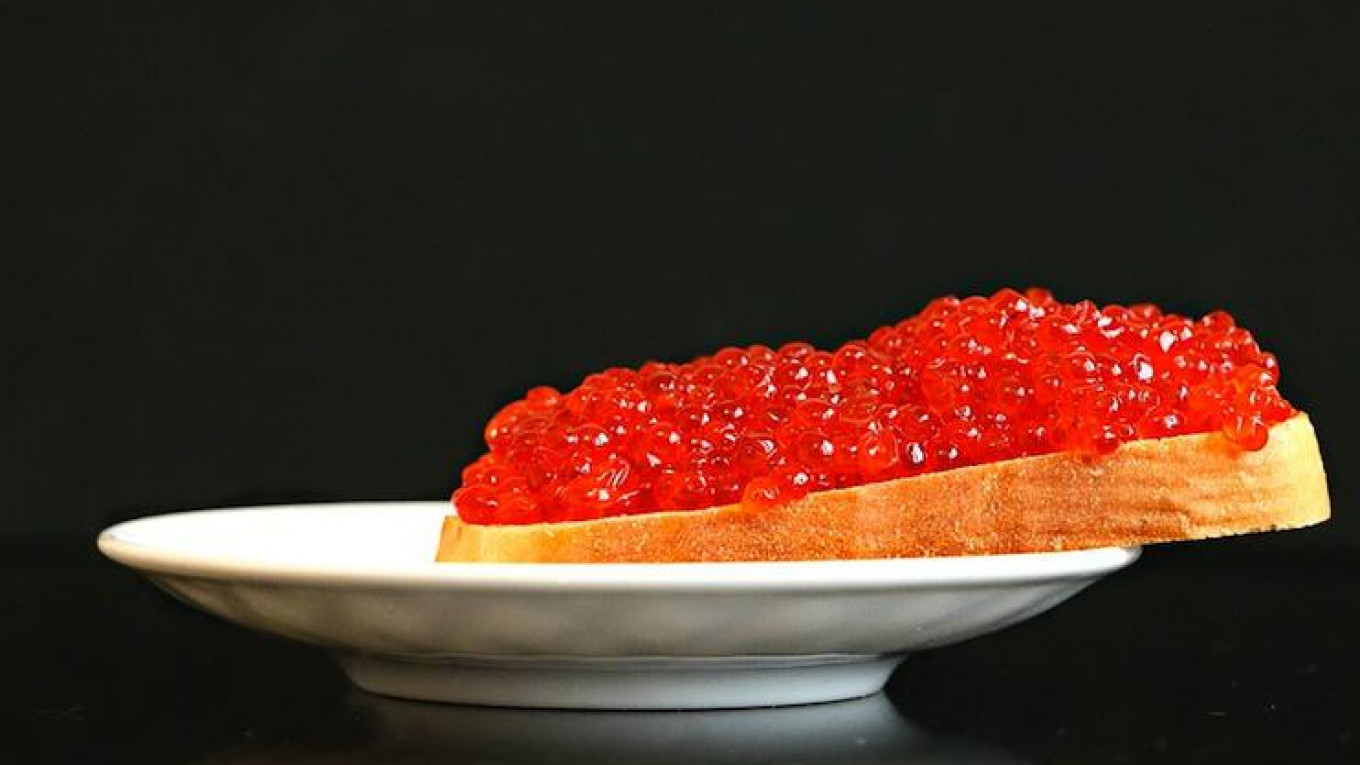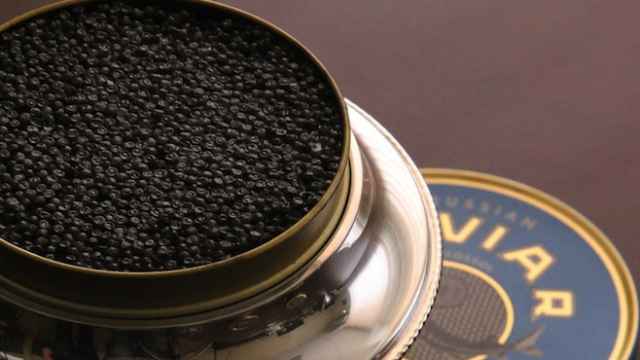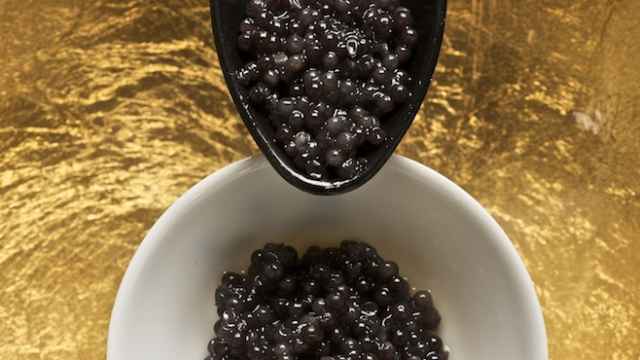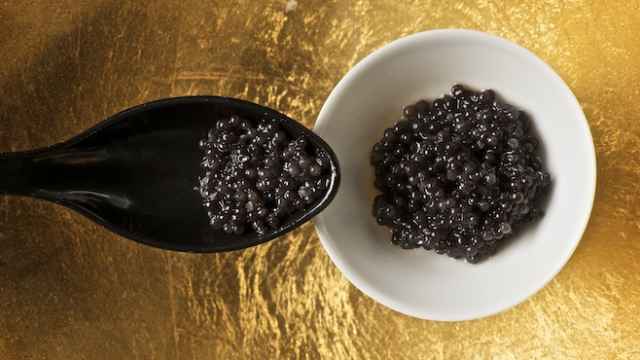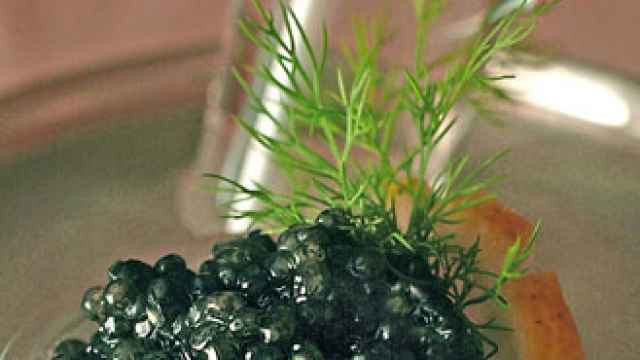Икра: calf muscle (really)
All you language nuts know by now that the whole thing about Eskimos having 79 or 143 names for snow is a total myth from start to finish. Once that myth was busted, linguists moved on to discredit the larger theory that the language we speak both affects and reflects our perception of the world.
But today, ladies and gentlemen, I intend to unbust that myth. I give you: Russians and their caviar. Do Russians produce and eat lots of caviar? They do. How many words do they have for it? Ешь — не хочу (Loads of them.)
First of all, икра (caviar) comes in five colors. How’s that for a surprise? Чёрная (black), which comes from the fish of the sturgeon family; красная (red) from the salmon family fish; розовая (pink) from whitefish and hake; жёлтая (yellow) from the Caspian roach; and — wait for it — белая икра (white caviar), which comes from виноградные улитки (grapevine or French snails). The snails produce a few eggs twice a year, weighing a total of 3 grams and barely filling a teaspoon.
Oh, but that’s not all. There are four kinds of prepared caviar. The first is зернистая икра (fresh-grain caviar), made by taking the roe out of the sac, popping it into a sieve, and salting it just a bit. The second type is паюсная икра (pressed caviar), which is more complicated to produce. First the eggs are salted in the sac, then slightly dried, then cleaned and pressed. Slight fermentation blends with freshly pressed икринки (individual eggs) to make this the best, according to caviar connoisseurs, i.e., any Russian over the age of 50. The third kind is called троичная (troika caviar), which back in the day was the rarest kind, made by special order for gourmands in Moscow. The roe was first placed in a trough and covered with a dense brine, then sprinkled on filter pans and left to dry completely. This dry caviar was then packed, sealed and sent to Moscow from the Volga by the fastest почтовая тройка (postal service troikas), hence the name. And the final type is just the opposite — for poor folks. Called ястычная икра (unfiltered roe, roe in the sac), it was just salted in the sacs.
And each of these was further described by grade: высшая (highest), первая (first), and вторая (second) — all but ястычная икра, which was low-grade by definition.
Икра can also refer to vegetable spreads, like кабачковая (squash), баклажанная (eggplant) and грибная икра (mushroom caviar). It’s not quite clear why these are called икра, but they’re made of small pieces of vegetables and spread on bread, so they’re sort of like caviar. My personal theory is that the only way Russian moms could get their kids to eat bread husks covered with mashed squash was a fancy name. It was a marketing ploy — like Fruit Loops, but for Russian peasant kids circa 1576.
But that’s not all. In Siberia, икра was a thick local cabbage soup. In Tambov, икра was a chunk of floating ice. And everywhere in Russia, it was the word for a person’s calf muscle. That is apparently a purely Russian usage, not found in the other Slavic languages. Etymologists have theories, but no certain sense of where all this originated.
But who cares where it came from? It’s like Eskimos and their snow, only delicious.
Michele A. Berdy is a Moscow-based translator and interpreter, author of “The Russian Word’s Worth” (Glas), a collection of her columns.
A Message from The Moscow Times:
Dear readers,
We are facing unprecedented challenges. Russia's Prosecutor General's Office has designated The Moscow Times as an "undesirable" organization, criminalizing our work and putting our staff at risk of prosecution. This follows our earlier unjust labeling as a "foreign agent."
These actions are direct attempts to silence independent journalism in Russia. The authorities claim our work "discredits the decisions of the Russian leadership." We see things differently: we strive to provide accurate, unbiased reporting on Russia.
We, the journalists of The Moscow Times, refuse to be silenced. But to continue our work, we need your help.
Your support, no matter how small, makes a world of difference. If you can, please support us monthly starting from just $2. It's quick to set up, and every contribution makes a significant impact.
By supporting The Moscow Times, you're defending open, independent journalism in the face of repression. Thank you for standing with us.
Remind me later.



